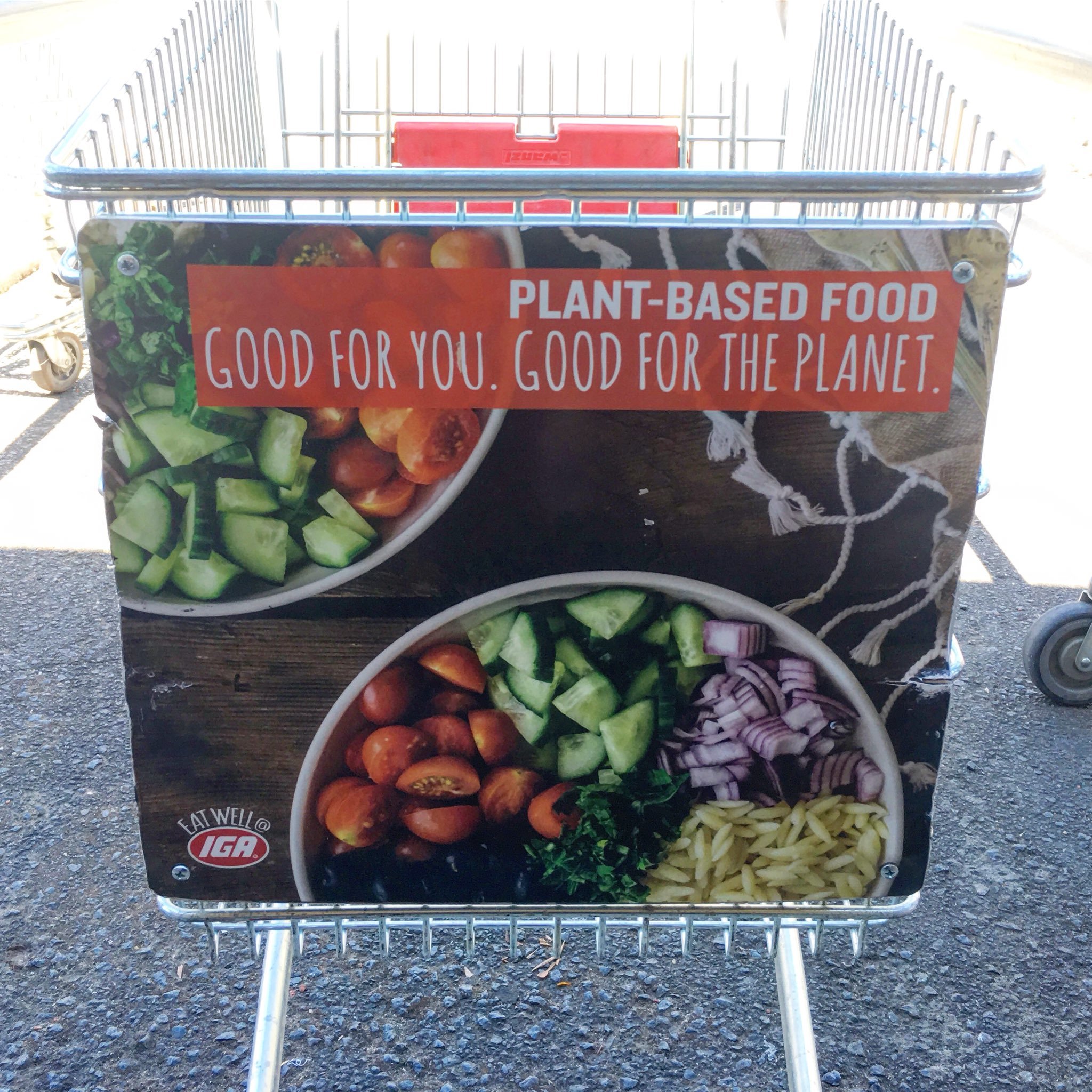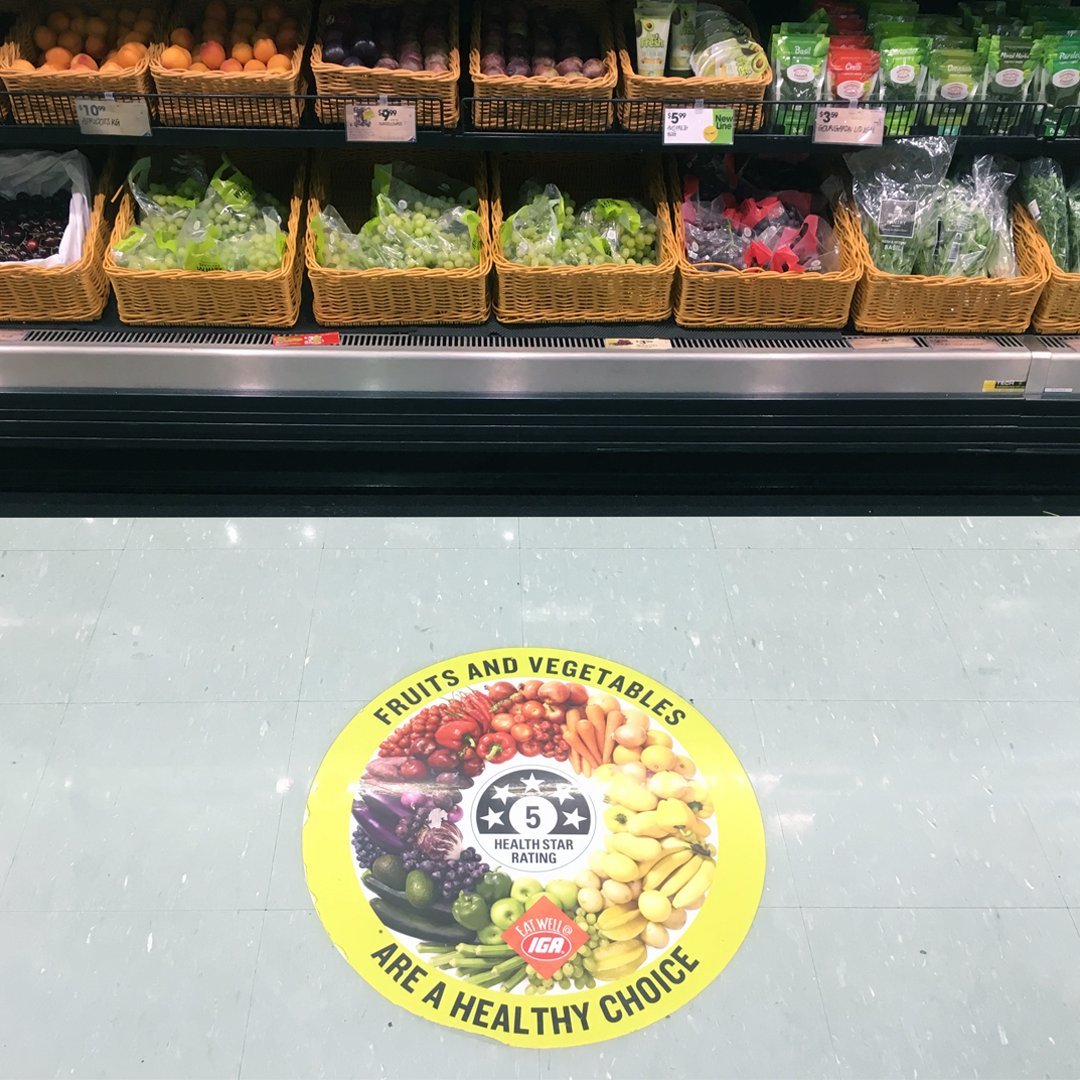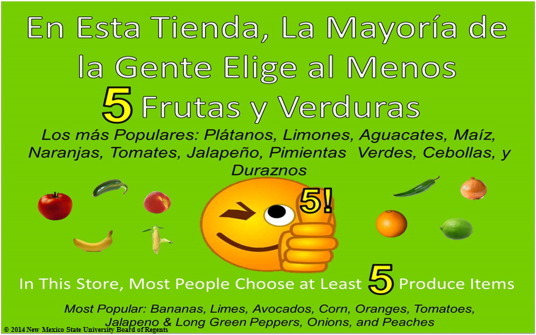Settings-based approaches: grocery retail
Settings-based interventions can create supportive environments for obesity prevention and management. Outlined below is the rationale for policy and practice changes in grocery retail settings, together with a summary of evidence on strategies shown to be effective and a discussion of some notable trials.
Key Evidence
Food retailers shape purchasing decisions through marketing strategies, particularly the ‘four Ps’ of price, promotion, place and product
Changes in grocery stores can help shoppers buy and consume more healthy foods
The World Health Organization recommends strategies in community settings to tackle modifiable risk factors for chronic disease including poor diet and physical inactivity.1 Strategies may draw on existing infrastructure in settings such workplaces, healthcare settings, sports clubs and grocery stores to reach large numbers of people.
Nearly all food is purchased in some type of retail setting and, in Australia, this includes two-thirds of food purchased from supermarkets.2 Food retailers play a critical role in shaping purchasing decisions including through the ‘four Ps of marketing’ – namely price, promotion, place and product.3 There is growing interest in harnessing the potential and power of food retailers to create environments that encourage healthy food purchases and discourage excess purchases of unhealthy food and drinks.2
Policy and practice changes to grocery stores and supermarkets can help shoppers buy and consume healthier foods4 and have considerable potential to change population diets and social norms.3 A systematic review found that interventions with multiple components were most effective at generating increased sales of healthy foods and generally used a combination of information strategies (labelling, promotions) and increased availability of healthy food options.4 Another systematic review found that, in particular, shelf labelling featuring nutrition summary scores was an element of many successful, multi-component interventions.3 Price incentives (such as discounts or vouchers for healthy foods) were a powerful supporting mechanism.4 A review of reviews found that a number of factors influenced the implementation of healthy food retail interventions including ; retailers’ and consumers’ knowledge and preferences regarding healthy food; establishing trust and relationships; perceived consumer demand for healthy food; profitability; store infrastructure; organizational support, including resources; and enabling policies that promote health.5 Further, accreditation schemes to incentivise provision of healthier foods may also be an effective strategy to improve provision of healthier food options.6
A 2018 study found Australia’s four largest supermarket operators (Woolworths, Coles, Aldi, IGA) had demonstrated some commitment to improving population nutrition and preventing obesity but could be taking much stronger action.7 The study assessed the policies and commitments of the four supermarket chains in six key domains: corporate strategy; product formulation; nutrition labelling; promotion practices; product accessibility; and relationships with external groups related to health and nutrition. Priority recommendations for the sector included reformulating own-brand products to reduce sugar, salt and saturated fat; introducing healthy checkouts without confectionery and sugary drinks on display; and committing to fewer price discounts on unhealthy foods.
In Victoria, the multi-component intervention at IGA supermarkets in Victoria, called ‘Eat Well @ IGA' was effective in increasing the sales of fruit and vegetables and products with a higher health star rating.89 The trial follows a pilot scheme in Bendigo which tested some of the intervention elements separately (shelf tags; healthy eating messages in trolleys and baskets; healthy end-of aisle displays) and found they were effective in guiding customers towards healthy choices.10
Intervention stores featured shelf tags for foods with a Health Star Rating of 4.5 or 5 stars, with healthy eating messages also promoted through stickers on floors and signs in trolleys and baskets. Other elements of the intervention included increasing healthy products in end-of-aisle displays, staff training, and local promotion including through letterbox drops and social media. Sales in intervention stores are being compared to those at control sites as part of a randomised controlled trial. Process evaluation indicates that over 30% of consumers recall the Eat Well @ IGA brand and 97% agreed it should be continued.11
As mentioned above, altering price, placement, display, visibility, promotion) may improve consumer purchasing behaviour. A review in real-life grocery stores found that price and placements interventions were most effective in driving healthier purchases.12

Twitter/ @EatWellatIGA

Twitter/ @EatWellatIGA
In the US state of Kentucky, a supermarket-based intervention led to increased fruit and vegetable purchases and decreased spending on sugar-sweetened beverages, when compared to control stores.13 The ‘Plate it up Kentucky’ intervention included in-store promotions (recipe cards, samples, marketing on shopping carts), prominent placement of featured products and a coupon providing a small discount with purchase of a promoted fruit or vegetable. The intervention ran over three months at 10 rural supermarkets with a further six supermarkets used as controls. Following the intervention, customers at intervention stores spent significantly more on fruit and vegetables and less on sugar-sweetened beverages, on average than control store customers. In the US states of Texas and New Mexico, researchers increased fruit and vegetable spending simply by placing placards on grocery carts detailing the average number of produce items purchased at particular stores.14 For example, one of the colourful placards stated that “In this store, most people choose at least five produce items” and listed the most popular items including bananas, limes, avocados, corn, oranges and tomatoes.14 A pilot study showed a 14% increase in average daily produce spending per person in an intervention store, compared to a control store. A follow-up study testing the intervention in two additional stores increased produce spending by 12.4% and 7.5% compared to baseline.

Payne 2015
Simply increasing availability of healthier products in supermarkets and placing them in prominent locations (without promoting any health benefits) was linked to increased purchases in a study in low-income, high minority neighbourhoods in the US states of Pennsylvania and Delaware.15 On the other hand, a UK study found that removing confectionery, chocolate and potato chips from checkouts reduced purchases of such foods by 17.3% and this was sustained at a 15.5% reduction after one year.16
A Danish study found that improved shelf-space allocation and a 20% discount on fruit and vegetables increased purchases by 15.3% compared with control supermarkets, but improved shelf space with no discount did not have any significant effect.17 A study in Melbourne, Australia, found that a 20% price reduction in fruit and vegetables resulted in households purchasing 35% more fruit and 15% more vegetables.18 Combining price reductions with a skills-building intervention did not confer any greater benefits than price reductions alone, and skills-building alone did not show any effect. In remote Aboriginal communities, a 20% price discount on fruit and vegetables and bottled water increased purchases in community stores, with consumer education found to have a small additional effect on vegetable purchases.19
For Aboriginal and Torres Strait Islander population, innovative work is occurring in the Northern Territory, the Coalition for Healthy Remote Stores, which consists of 14 Aboriginal-led, Aboriginal-community controlled and non-government, retail, health organisations, research institutes and universities, supports the prevention and management of preventable chronic disease within food retail stores to ensure remote community residents have access to affordable and healthy foods. Based on best practice evidence generation methods, the Coalition has developed key policy positions for the state governments Northern Territory Remote Stores Program.20
There is growing interest in policies to reduce the prevalence and influence of price promotions in grocery retail settings – for more information see Unhealthy food price promotions.
Content for this page was updated by Melanie Lum, Research Fellow and Serene Yoong, Associate Professor at the Global Centre for Preventive Health and Nutrition at Deakin University. For more information about the approach to content on the site please see About | Obesity Evidence Hub.